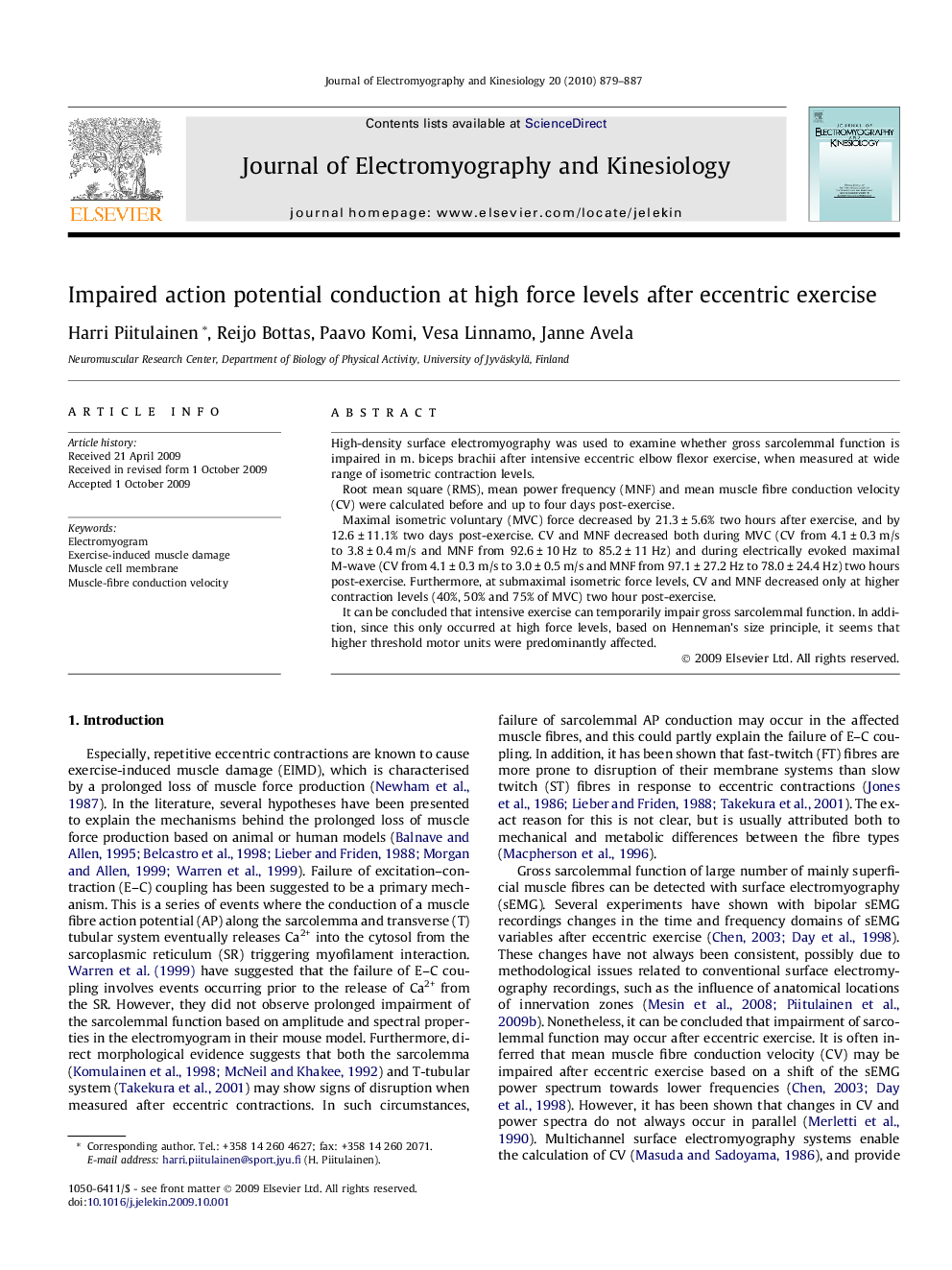| Article ID | Journal | Published Year | Pages | File Type |
|---|---|---|---|---|
| 4065130 | Journal of Electromyography and Kinesiology | 2010 | 9 Pages |
High-density surface electromyography was used to examine whether gross sarcolemmal function is impaired in m. biceps brachii after intensive eccentric elbow flexor exercise, when measured at wide range of isometric contraction levels.Root mean square (RMS), mean power frequency (MNF) and mean muscle fibre conduction velocity (CV) were calculated before and up to four days post-exercise.Maximal isometric voluntary (MVC) force decreased by 21.3 ± 5.6% two hours after exercise, and by 12.6 ± 11.1% two days post-exercise. CV and MNF decreased both during MVC (CV from 4.1 ± 0.3 m/s to 3.8 ± 0.4 m/s and MNF from 92.6 ± 10 Hz to 85.2 ± 11 Hz) and during electrically evoked maximal M-wave (CV from 4.1 ± 0.3 m/s to 3.0 ± 0.5 m/s and MNF from 97.1 ± 27.2 Hz to 78.0 ± 24.4 Hz) two hours post-exercise. Furthermore, at submaximal isometric force levels, CV and MNF decreased only at higher contraction levels (40%, 50% and 75% of MVC) two hour post-exercise.It can be concluded that intensive exercise can temporarily impair gross sarcolemmal function. In addition, since this only occurred at high force levels, based on Henneman’s size principle, it seems that higher threshold motor units were predominantly affected.
